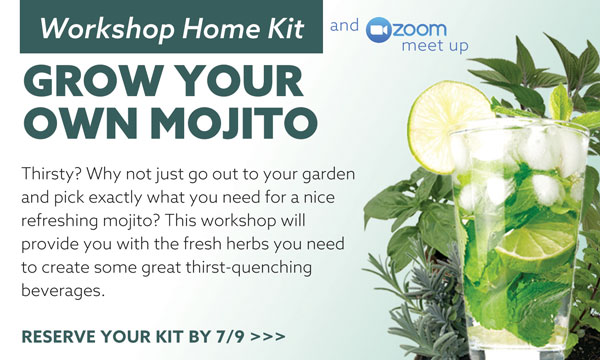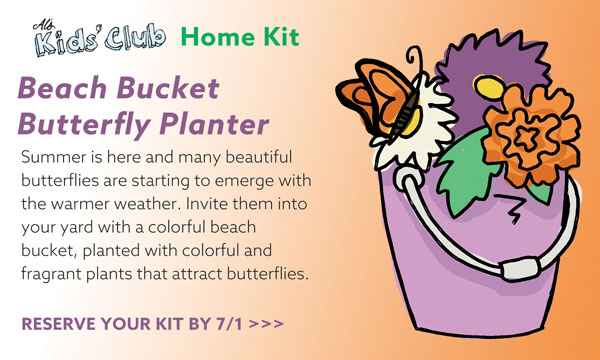8/1/2020
Planning Events in a Pandemic
Ellen C. Wells
Hay rides, corn mazes, wreath-making parties and Christmas open houses are all key elements of festive fall and winter seasons—and are traditional customer-attractors and money-makers for independent garden centers. But these same experiences are also highly unlikely to happen this year, thanks to the continuing COVID-19 pandemic. Garden centers thought fast on their feet this spring to offer curbside pickup and quick in-and-out plant shopping experiences as the pandemic bore down on the U.S. this spring, and that quick thinking has sustained much of our industry so far this year.
The critical question now is, how will garden centers adjust their usual year-end revenue streams while also keeping staff and customers safe?
First Things First
Before strategizing how you’ll transform your fall and winter events this year, you’ll need to establish a baseline of operating procedures. You likely already have one in place that you’ve been following since the early stages of the pandemic.
“You’ve got to know the authority that you’re going to reference,” says Laura Hammond, Director of Marketing for Al’s Garden Center in Portland, Oregon. “Whose recommendations and regulations are you going to follow, and that’s usually your state. Be predetermined about it.” Essentially, pick a recognized and official authority and stick with their recommendations and guidelines for social distancing, masks, crowd size and so forth.
From there, Laura says, planning and executing events are all about scenario planning. “You have to have Plan A, B, C and D, which all may be modifications on the same idea based on the size of audience you’re going to be able to entertain.” For example, an open house-type event that would normally span three or four hours would now be a day-long event; a day event would become a several-day event, and so on—all with restricted or metered attendance. The longer event would require staffing considerations different from what the traditional event would need. And more staffing means the event costs more for you, the host. It also means weighing the health risks to all involved.
Zoom’s the Word
“At the forefront of any decisions we make from now on is going to be the safety of our staff first and the safety of our community,” says Jessica Castillo, Director of Events for Rockledge Gardens in Rockledge, Florida. “We’ve seen that it can be done.”
And it can be done safely for both staff and customers with the help of technology. Rockledge successfully pivoted an in-person event, Mango Madness, into a Zoom-based webinar. The event, which explains the ins and outs of caring for and maintaining mango trees, was presented via the online video communications tool. The attendees also had the option of purchasing a 5- or 10-pound box of assorted mangoes before the virtual session so they could sample, get an idea of which varieties they preferred and be better informed before the mango seminar even got started. The webinar used the exact same PowerPoint presentation the session leader would have used had the class been in-person. In fact, one of the positives of a Zoom webinar is that attendees can type their questions in a “chat” feature during the presentation, rather than interrupting the flow of the class or completely forgetting their question by the end of the session.
Rockledge Gardens sold tickets to Mango Madness via Eventbrite, with the cost of the ticket coming back to the customer in the form of a coupon toward the purchase of a mango tree. Once the customer purchases a ticket through Eventbrite, the application sends them a link to the Zoom event, a coupon code and event reminders. Any task that can be automated through a third-party app makes life for the garden center staff a little bit easier.
“Following that same format we’re going to continue to do things like [Mango Madness],” Jessica says. “We’re going to gear it towards more of what we would do in the fall once we hit that time—a fall veggie gardening seminar in early fall, an herb garden workshop or something along those lines. We’re talking about doing a couple of new things such as a Florida natives seminar or a botanical cocktail-themed seminar. I think that’s really fitting for end of summer/beginning of fall, the idea of having botanical cocktails for people who want to have smaller, outdoor gatherings.”

Adapt and Reimagine
Laura at Al’s says they have converted their once-a-month Wine and Workshop Wednesday classes into a Zoom format. “It’s a hands-on, make-and-take class, once a month in all our stores,” Laura says. “People register for the class online, come curbside to pick up their kits, and then they go home and at a certain time they log on to Zoom and are being instructed.” Word of advice from Laura: Don’t give up your wreath-making classes or your fall hand-on classes. Try to retain that audience by adapting.
In addition to converting in-person workshops to virtual meeting events, Laura sees two other avenues for garden retail: one high-end, appointment-based and the other highly automated with low contact and high convenience. The former could be appointments with families to determine holiday décor, for example. The latter, drive-through or curbside pickup of holiday staples in the form of bundled, pre-staged bundles or kits.
 “If anybody pivoted and figured out curbside pickup this spring, then they need to apply that to whatever they’re going to do in the fall,” Laura suggests. “Maybe it’s a pumpkin stand that is a drive-thru or a Christmas experience that is a drive-thru in the parking lot. I think the challenge is using your real estate differently. If people are willing to bundle up it’s really about figuring out how to take an event you may have squished into a closed greenhouse and really expanding it and giving people something to do while they wait.”
“If anybody pivoted and figured out curbside pickup this spring, then they need to apply that to whatever they’re going to do in the fall,” Laura suggests. “Maybe it’s a pumpkin stand that is a drive-thru or a Christmas experience that is a drive-thru in the parking lot. I think the challenge is using your real estate differently. If people are willing to bundle up it’s really about figuring out how to take an event you may have squished into a closed greenhouse and really expanding it and giving people something to do while they wait.”
The key is knowing your customers’ level of comfort, “and that’s going to change throughout this whole experience,” Laura says. “It’s not your comfort level, it’s your customers’ level of comfort. And the more we can accommodate that, the more customers we’re going to get.”
Pictured: Al’s Garden Center’s series of virtual workshops have been a hit with both adults and kids, thanks to the efforts of Customer Experience Manager Eve Hansen and Events Coordinator Anna Wagner. The workshop videos can be found and enjoyed on multiple video outlets—including live Zoom meet ups.
Queuing Up For Q3 & Q4
Some of Laura’s top-of-mind suggestions for how to proceed with events this fall and winter include:
• Video is your friend! Practice the webinar but also record a full no-audience version to use as clean, online content.
• Refigure and reimagine your real estate. What can you do with it?
• Know what’s going on 24-48 hours before your event and be “nimble as heck.”
• Experience another business’s event. Examine the instructions, expectations and precautions, and learn what you should do and would do differently.
• What’s old is new again. Try a drive-in or carhop experience.
• Convert your big fall or winter event into one or several 2-minute videos.
Be Like Montgomery
The City of Montgomery, Ohio, has a long tradition of festive Independence Day parades, but this year, its organizers had to think outside the parade route in order to comply with social distancing. The solution? Keep the jugglers, antique cars and fire engines stationary in a spacious parking lot and have the audience drive a circuit around them.
How can you put your own spin on this “reverse” parade and adapt your IGC’s fall or winter festival? GP